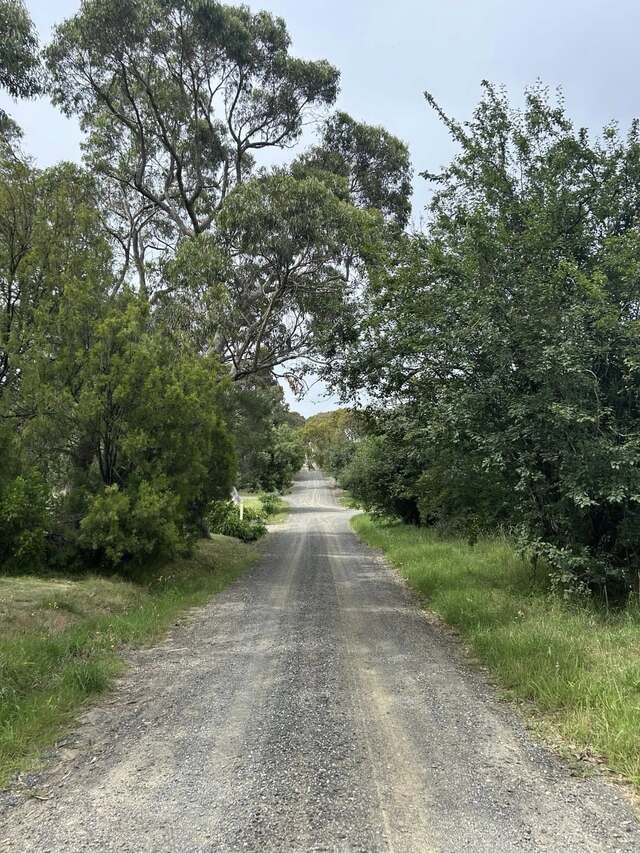Beaconsfield residents are raising serious concerns about the environmental impact of the newly approved Acre Ridge Development at the end of May Road.
Residents were shocked to learn that over 2,000 trees across the development area are set to be removed — including trees known to house native wildlife — with no exceptions confirmed by arborists.
“I was speaking to the man marking all the trees yesterday and he said there are around 1100 trees on the main property, around 900 trees on the second property and around 300 trees on May road that are all being removed,” one resident shared in the community group.
“It is so important for future generations to retain these beautiful wildlife corridors within new developments. The council and developers take the cheapest and easiest way out by bulldozing the land to a barren state,” Michelle said.
Nearly every tree along May Road and between May Road and Whiteside Road is set to be bulldozed and removed, including all trees outside property boundary fences.
This pocket of land is home to a rich variety of native wildlife, including Tawny Frogmouths, Yellow-tailed Black Cockatoos, turtles, echidnas, kangaroos, parrots, and ring-tailed possums, which have been reported to Cardinia Shire Council.
“I fear they will suffer displacement and be forced to face our busy streets and roads because their natural wildlife corridors that allow them to move safely between their habitats will be destroyed,” Jenine said.
“I’m highly empathetic when it comes to the lives of our wildlife and it makes me feel very sad to know their homes are being destroyed and they’ll become displaced and possibly die. We need to be their voice!”
Residents, community groups, and animal welfare organisations have expressed that they were neither informed nor consulted about the full scale of the Acre Ridge development and the planned tree clearing.
All of this has been “disregarded”, and residents say their voices have fallen on “deaf ears” at the local council, state, and federal levels.
“How this was even approved by Town Planning is just astounding, with absolutely no regard for the residents or the future,” Michelle said.
“There is an abundant amount of varied wildlife that live in this corridor that has been re-zoned by the government from a Green Wedge to Residential. They could incorporate trails and walking tracks within these estates and keep these beautiful, established trees.”
The loss of all the trees and natural space would also undoubtedly have a significant impact on people’s emotional and mental well-being.
“Having green spaces in new developments can encourage outdoor activity and be a place for relaxing. Integrating nature into new developments has been shown to improve mental health, reduce stress and enhance overall wellbeing,” Jenine said.
“Retaining the natural habitat helps ensure that new developments are more sustainable, balancing human needs with environmental preservation.”
Members of the Cardinia Environment Coalition (CEC) share the concerns of residents who fear that endangered flora and fauna will be affected by the latest planning proposals for the May Road area.
“The Officer Native Vegetation Precinct Plan identifies extensive areas of vulnerable and endangered vegetation in this part of the Shire and many properties have a High Conservation status,” spokesperson, Ian Chisholm
“We seek more information about: the extent of proposed vegetation removal from private properties in this area; the likelihood that roadside vegetation will be lost; the arrangements, if any, for off-set plantings; and a long-standing proposal to link May Road and Whiteside Road, by extending Pink Hill Boulevard to the east; has this proposal been abandoned?”
President, Victorian Kangaroo Alliance, Alyssa Wormald said “the importance of preserving habitat and wildlife corridors cannot be overstated”.
“So many native creatures depend on established trees, and that habitat cannot simply be replaced as it generally takes over a century for trees to form the hollows that arboreal wildlife need for survival,” she said.
“Contrary to the popular belief that kangaroos benefit from cleared ground, grey kangaroos (like the Eastern Grey Kangaroos that live in the Beaconsfield area) rely on woodland for shade and shelter during the day, and emerge in the late afternoon to graze in nearby clearings.
“Developers hold the fate of wildlife large and small in their hands, and it is critical that they do all they can to preserve habitat and habitat connectivity. It is important for both wildlife and human safety that developers minimise disruption that will push animals into unfamiliar and dangerous territory such as roads and urban areas.”
Cardinia Shire Council’s General Manager Community & Planning Services Debbie Tyson said the Cardinia Shire Planning Scheme serves as the framework for managing growth across the shire while safeguarding Cardinia’s unique environment. The scheme balances residential and commercial development with environmental conservation.
“Council issued a planning permit for 64 May Rd Beaconsfield on 31 August 2023 for the subdivision of land and removal of native vegetation,” he said.
“Council assessed the planning permit application to ensure it aligns with the outcomes of the Officer Precinct Structure Plan, which focuses on the delivery of residential areas and the Officer Native Vegetation Precinct Plan outcomes to protect native vegetation.
“Council’s assessment determined that native vegetation generally located along the western and southern boundaries of the site has been identified for protection and will be retained.
“Any tree removal requiring a permit must have a qualified zoologist or registered wildlife carer present onsite during the removal process to ensure any wildlife, like birds or small mammals are safely managed and relocated. Property owners and developers are required to manage wildlife risks on their land and ensure that their actions comply with the Wildlife Act 1975 and the Prevention of Cruelty to Animals Act 1986. The approval of this permit does not eliminate the need to adhere to the regulations and requirements of any other authority, act, or regulation.”
The Department of Transport and Planning spokesperson said “precinct Structure Plans ensure a balanced approach to growth which also considers ways to protect the environment.”
“The Native Vegetation Precinct Plan, prepared alongside the Precinct Structure Plan, identified areas where native vegetation was to be protected.”







